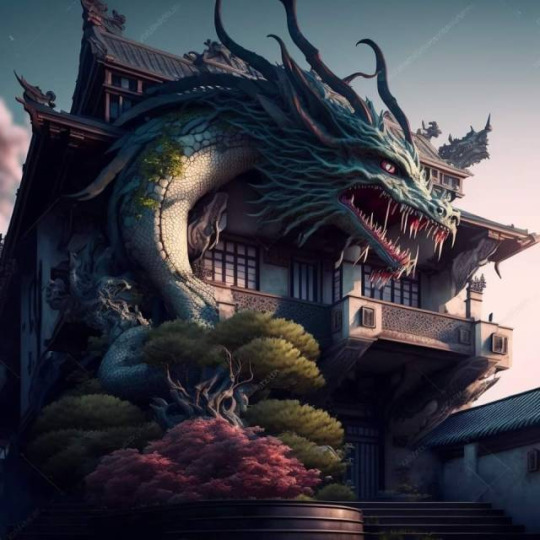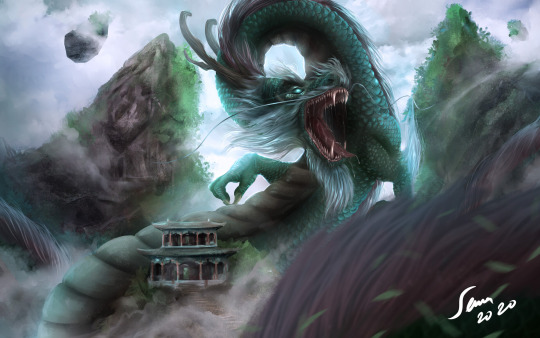#I might try scaling up the original image by some method then thresholding it and auto-tracing the result of that. idk.
Explore tagged Tumblr posts
Text

basic threshold png of the first badge from this post.
#I really love this design. wanna make a shirt with it purrhaps.#I started trying to make a vector out of it but couldn't quite figure out a pleasing way and I'm tired now so I'll try again tomorrow maybe#anyone have any suggestions for how to get a clean smooth vector out of this? the low resolution is a bit of an obstacle.#I might try scaling up the original image by some method then thresholding it and auto-tracing the result of that. idk.
49 notes
·
View notes
Text
Copyright Consequentialism
I've seen a lot of discourse on AI art. There's not-so-solid arguments against it, there's solid arguments against it, there's good solid debate about the actual facts, there's stuff that's... less like that. I'm going to stay out of most of it, I understand a lot of this stuff is motivated by people trying to protect their or their friends' side gig.
But an attitude I implicitly see crop up sometimes is:
The same image might be copyright infringement, or might not be copyright infringement, depending solely on the method of its production.
Obviously, motive matters, but it doesn't override the core question of whether copyright infringement is going on. Remember, copyright infringement is a legal question, not a moral one! It's a question of whether there exists some original copyright holder(s) with actual claim to an image, and whether that holder should get to assert legal rights. It's a little more complicated than pixel-to-pixel correspondence, clearly the gist of an image can be a violation, but this has limits: Disney cannot claim the rights to every white-on-blue title card (even if their board of directors would like to and has probably tried).
Moving on, look at this post by @vaspider. The post's core claim (some of the images in the AI training set are clearly copyrighted) is 100% correct! Even the most strident AI-supporter isn't denying that copyrighted images are part of the dataset. The actual debate around this point relies on a definition of fair use, and whether or not it is 'fair use' of an image to tweak your model's variables using it.
But looking at the examples given, I find myself asking a different question.
Is this art, in itself, actually objectionable? Let's grab one of those pseudowatermarked images from the post, so that you know I'm not cherry-picking examples, and ask:
If this was made by a human artist (without the watermarks, we all agree AI can make something like this without the watermarks), would you argue that's a copyright violation?.

I think 'yes' is a very, very hard position to defend. I did some sleuthing (using that other product of webpage crawlers, google image search), and the closest artwork I could find, which replicates both all elements (horned serpentine dragon, vaguely east asian two-floor house, elevation differences, trees) and their general look, is this:

(https://www.artstation.com/artwork/Oodyqv)
(for those interested, the image is from 2020, so it probably got included in stablediffusion's training data; this is what the average case of art theft looks like in practice)
Are these images similar? Yes! If you mixed those two up with a hundred random pictures, I'd be able to match them reliably. If you used a short sentence to describe them, the sentences might equally apply to both. If you told me both artists were given vague but identical instructions, I'd believe you.
But the images aren't that similar. The arrangement of the elements is completely different. The background, lighting, and details match in no way. The AI's flaws, mostly in the dragon's lower body and teeth, are evident. The actual dragon and actual house match only abstractly: shape, palette, texture, scale, scales, and details are all different.
If I myself drew the first picture, that wouldn't infringe on the second's copyright. If I drew the first after seeing the second, that wouldn't infringe on the second's copyright. If I drew the first after being explicitly inspired by the second and setting out with the intent to draw a teal horned dragon coiled around an Asian house in the mountains, then there's a lot of final products that could infringe on the second's copyright, but the first image is not one of them. It just doesn't reach the threshold: not every blonde elf archer in a green tunic is Legolas, and not every teal dragon is this specific one.
The post I linked ends with the following informative graphic:

Leaving aside the absurd apparent claim (AI simply glues recognizable chunks of art together), it's notable for trying to create a meaningful distinction between the process of creation for humans and AIs, which it only tenuously relates to the actual output.
(sidenote, if AI is using art for samples, it would do great with fine details but struggle to compose a big picture, right? but look at the dragon image! it looks great at first glance, but zoom in on little details like its teeth and tail and things stop adding up; it's the opposite of what you'd expect!).
But of course, the process doesn't matter at all! If a human created such a stolen-art collage, that'd be textbook copyright infringement. And if an AI created the image on the left, it consequently would not be.
This is what I mean by copyright consequentialism: the stance that copyright violation is a quality inherent to a work, not to the second work's creator's intent, prior knowledge, or cited inspiration. Other factors might matter (innocent infringement is a thing), but they mostly matter when determining punishment, not when re-asserting the original artist's rights.
If you accidentally draw something too similar to someone's copyrighted design, you have to stop doing that. If you drew something that wasn't too similar, you don't have to stop. Copyright gives you rights over an image and some reasonable range of variants: not over all pictures that contain teal dragons, even when the inspiration is there.
And extending that back to the average case of AI art compared to its closest pre-existent inspiration... I just don't think there's a case, in the average situation. If you create something that's too similar, the artist can sue you with no changes to the law required, but that's trivial to avoid: just run the same prompt a few more times and pick whichever looks least copyright-violatingish.
This doesn't quite close the door on copyright arguments. Maybe art created by stable diffusion doesn't innately infringe on copyright, but the process of creating stable diffusion itself does! But the process of crawling and indexing images is well-established as fair use (with Google very interested in keeping it that way), so you'd have to specifically target the step where hundreds of terabytes of images turn into 2 gigabytes of numbers. And if any step in the whole process could be considered transformative, I think it'd be that one.
(Also, I can't help but feel people wouldn't rail against stable diffusion if there was a single closed-source copy, only used for research purposes, with all generated art deleted afterwards, suggesting their issue does not lie with the model's mere existence)
When do we need pushback against AI? When it violates privacy by accessing private data. When it's used as an excuse to fire artists and replace them with subpar automatons. When state-of-the-art image generation models are rendered proprietary, or companies try to claim copyright over their outputs. But these issues are quite a way upstream or downstream of the actual act of creating and using the model: and fighting for a radical change to the meaning of 'fair use' is unlikely to succeed and likely to backfire if it does.
(what this post isn't about: the callous attitude of some pro-AI discoursers, the genuine economic struggles of being an artist in the digital age, the economic impact of AI on those artists, the hard problem of consciousness, elon musk, or the subjective quality of AI art: thank you, and please stay civil)
#AGAIN THIS IS ABOUT A VERY SPECIFIC TYPE OF COPYRIGHT ARGUMENT ONLY#ai art#discourse#ai#artificial intelligence#cw discourse#cw ai#ai art discourse#this got a bit longer than I'd have liked
9 notes
·
View notes